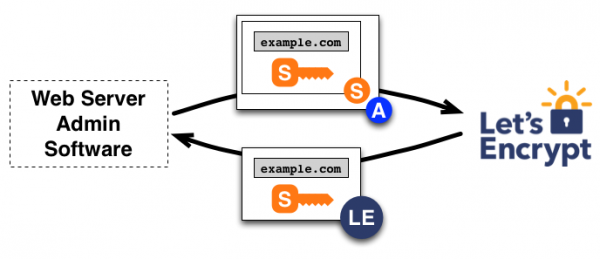Lets Encrypt - Moving Towards an Encrypted Web

Do you own a website? If so, as of today Let's Encrypt, a new non-profit certificate authority (CA), entered Public Beta and allows you to add HTTPS to your website for free and more easily than ever before.
If you've ever experienced the hassle of setting up a secure website, you'll be pleased to know that Let's Encrypt automates the entire process and only requires you to manage HTTPS with a few simple commands. This could be a huge step towards an encrypted Web.
Why TLS certificates are important
When we access a website, our device makes an HTTP connection to the server that is hosting the website. But as HTTP connections are unencrypted, anyone can potentially intercept our connection and read our traffic or even re-direct us to a malicious server in order to infect our device with malware. To prevent this, it's important that our connections to websites are encrypted and that the websites we visit are secure.
HTTPS was designed for precisely this purpose. Through the use of Transport Layer Security (TLS), it encrypts HTTP connections to websites that support it. This is where digital certificates play an important role; they authenticate websites that support HTTPS so that we know we're communicating with the right servers. Websites that are TLS certified are more secure because they allow you to connect to them via encryption, limiting the probability of interception and increasing the confidentiality of exchanged data.
How Let's Encrypt helps us move towards an encrypted Web
Up until today, obtaining a TLS certificate has been a difficult and expensive process which has discouraged many people from using HTTPS. Starting from today though, Let's Encrypt addresses this problem.
According to the EFF: “Switching a webserver from HTTP to HTTPS with this CA will be as easy as issuing one command, or clicking one button.”
The Let's Encrypt client handles the certificate request and authentication for you and, by default, renews your certificate automatically. It can also configure servers with your new certificate through a simple command. Detailed information on system requirements and on how to use Let's Encrypt's client to request for certificates can be found in its documentation.
That said, it's important to bear in mind that Let's Encrypt just entered Public Beta, which means that improvements (particularly on the client side) will still need to be made and it might contain some bugs. Yet, this is still an important step towards a more secure Web for everyone. Not only does Let's Encrypt advance TLS security best practices, but it's also transparent in the sense that all issued or revoked certificates will be publicly recorded and available for anyone to inspect. Furthermore, Let's Encrypt follows open standards by publishing its automatic issuance and renewal protocol.
Help make HTTPS the default across the Internet. Request a TLS certificate and let's encrypt.